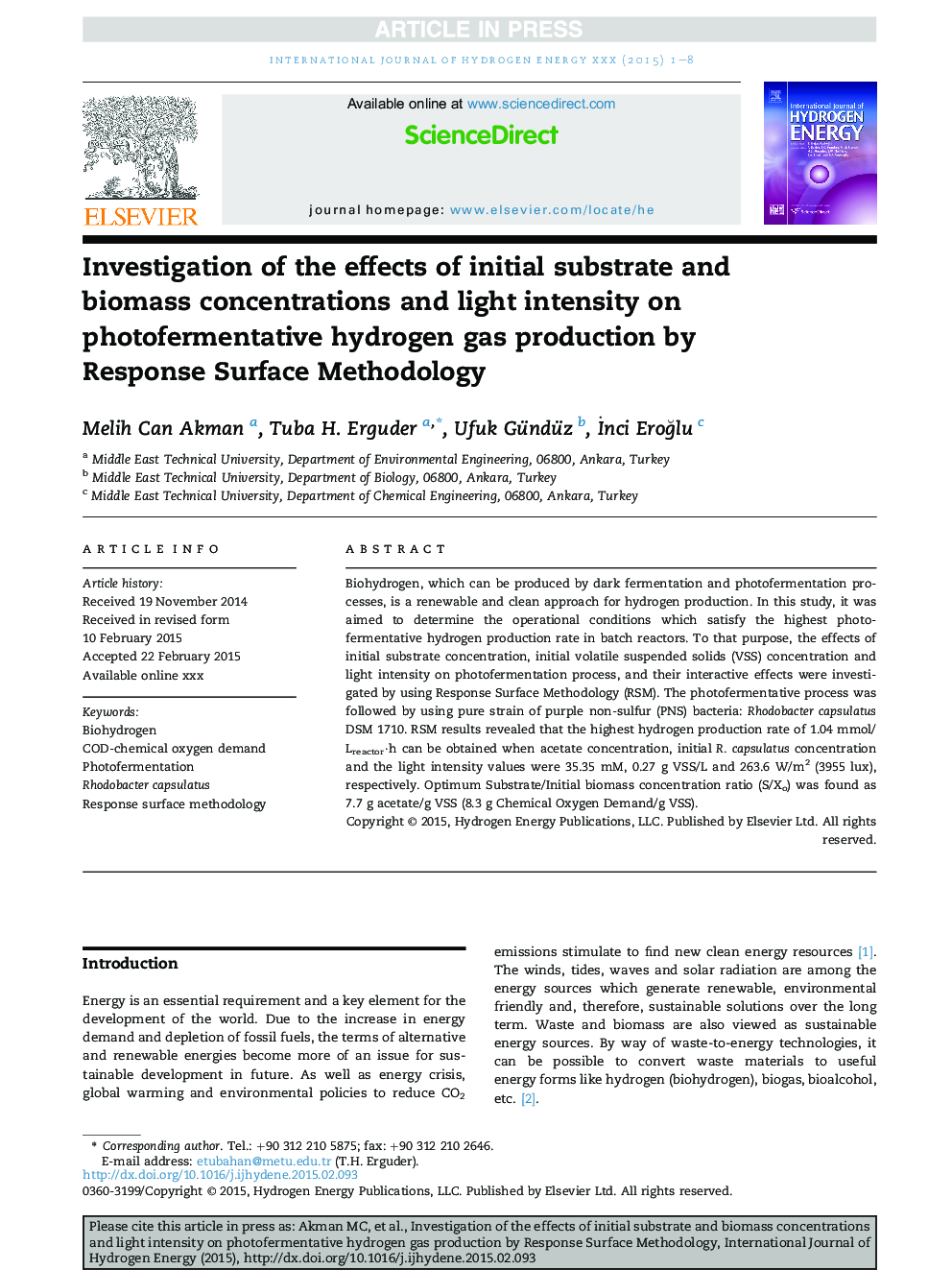| Article ID | Journal | Published Year | Pages | File Type |
|---|---|---|---|---|
| 7715683 | International Journal of Hydrogen Energy | 2015 | 8 Pages |
Abstract
Biohydrogen, which can be produced by dark fermentation and photofermentation processes, is a renewable and clean approach for hydrogen production. In this study, it was aimed to determine the operational conditions which satisfy the highest photofermentative hydrogen production rate in batch reactors. To that purpose, the effects of initial substrate concentration, initial volatile suspended solids (VSS) concentration and light intensity on photofermentation process, and their interactive effects were investigated by using Response Surface Methodology (RSM). The photofermentative process was followed by using pure strain of purple non-sulfur (PNS) bacteria: Rhodobacter capsulatus DSM 1710. RSM results revealed that the highest hydrogen production rate of 1.04 mmol/Lreactor·h can be obtained when acetate concentration, initial R. capsulatus concentration and the light intensity values were 35.35 mM, 0.27 g VSS/L and 263.6 W/m2 (3955 lux), respectively. Optimum Substrate/Initial biomass concentration ratio (S/Xo) was found as 7.7 g acetate/g VSS (8.3 g Chemical Oxygen Demand/g VSS).
Related Topics
Physical Sciences and Engineering
Chemistry
Electrochemistry
Authors
Melih Can Akman, Tuba H. Erguder, Ufuk Gündüz, Ä°nci EroÄlu,
